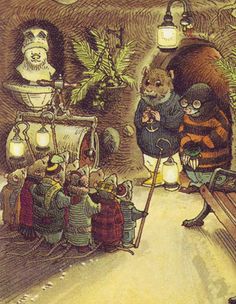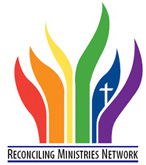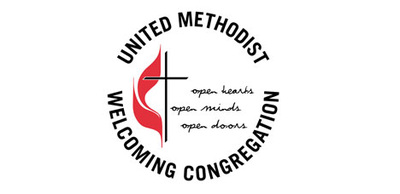|
By Jeremy Grossman, Discipleship Chair
I always liked the Tin Man. Of all of Dorothy’s friends in Oz, I thought the Tin Woodsman as described in L. Frank Baum’s The Wonderful Wizard of Oz and portrayed in the classic 1939 movie was the most fascinating. The Scarecrow, lacking both Brains and a Heart, valued Brains as his top priority. The Cowardly Lion, on the other hand, had both Brains and Heart but felt they were useless without the Courage to use them. But the Tin Man had it right—a Heart, the ability to Love, is what makes a Life worthwhile. The Tin Man himself says, “I shall take the Heart, for Brains do not make one happy, and happiness is the best thing in the world.” Happiness—as the result of loving and being loved—IS the best thing in the world. Love is, in fact, the reason for which we were created. Of course the irony of the journey to Oz is that the Tin Man proves again and again that not only does he have the capacity to love, he is instinctively the most loving of all his companions. In the original book, he is at constant risk of rusting because his great compassion for all living things causes him to tear up and cry over the smallest things (like accidentally stepping on a bug). When Dorothy and company finally reach Oz, defeat the Wicked Witch, and reveal the Great and Powerful Wizard as a humbug, the Tin Man receives his Heart as a token gesture. The only benefit in the Heart granted by the Wizard was to allow him to believe in the love he was already capable of. Put another way by the band America in 1974 (in a string of double negatives), “Oz never did give nothing to the Tin Man/That he didn’t, didn’t already have.” Isn’t that so much like us? We have the capacity for greatness but we don’t see it? We are created in Love to Love, and yet we struggle to recognize our capacity to do good. I’ll admit I’m not an Oz-ian scholar, so I’m not sure what happened in the sequel books once the Tin Man had his Heart…did it change him? Did he become even more loving now truly believing he could? Most of us perform acts of Love daily without even realizing it, which is a wonderful thing about human nature—but what if we DID recognize it? What if we learned to be much more intentional in how we love, in our relationships? How much greater could we do for God, our community, our families, and ourselves if we learned more about how to love? Christ explains the Greatest Commandments in the Gospels as 1) Love God with your whole heart, soul, mind, and strength; and 2) Love your neighbor as yourself. Father Richard Rohr from the Center for Action and Contemplation explains, “The only way I know how to teach anyone to love God, and how I myself can love God, is to love what God loves, which is everything and everyone, including you and including me!” This is the goal of discipleship at Trinity United Methodist Church: our studies, our small groups, our classes all eventually point to learning to love. As Discipleship Chair at Trinity UMC, I’ve chosen “Learning to Love” (or, in shorthand, “L2L”) as the motto of Discipleship ministry as we continue to move forward in growth as a congregation. More formally, I’ve worked with Pastor Tracey and the Governing Board to lay out a set of guiding tenets for this ministry along with the following precept: “A disciple of Jesus Christ at Trinity United Methodist Church seeks to grow and guide others in the Love of God and community through meaningful, intentional relationships and personal development.” The entirety of our goals and guidelines are published in this newsletter, intended to point us in the right direction as individuals and as a church. We recognize our failings, but we also recognize our potential. We recognize our weaknesses, but we also recognize our strengths. Like the Tin Man, we are learning to love.
1 Comment
By Pastor Tracey Leslie
This year during Lent our Sunday worship has included a segment called “We Are the Church Together;” an “interview” with church folks about their engagement with Trinity. We’ve heard from a variety of people (Bronwen Everton, Morris DuBose, Amanda Atkins, Dr. Steve Ash, and Susan Eicher). They’ve shared with us some of the ways they have connected and served and what has made Trinity a special place for them. Many of you are aware that Trinity was awarded a grant from the conference last year; and received a DNR grant for our brickwork. We are currently applying for additional grants to fund the care of our facilities and our community outreach programs. Many of these grants require reports on metrics related to Trinity’s membership and worship attendance. While membership and worship attendance are important, they represent only a small piece of what Church involves. Being part of a church involves far more than showing up for Sunday worship. The Book of Acts tells the story of the Church’s beginnings. Early in Acts, right after the story of Pentecost, we read a summary statement about what life was like among the early Christians. So, what did it mean to be a part of the early Church? What kind of “metrics” might they have used in the first century? Acts 2:42-47 tells us that the early Christians spent a lot of time with one another: they fellowshipped together and ate meals together; they learned stories of Jesus from the apostles; they prayed together; they worshiped together; they practiced generosity and sharing, being willing to sell possessions so that they might distribute the proceeds of those sales to their brothers and sisters who were in need. Not surprisingly, our “We Are the Church interviews” have named some of these very same things. Trinity folks have shared the joy they experience in serving those in need, in supporting the church financially, through worship, prayer and being a part of one another’s lives. That’s what it means to be the Church! When we say “We are the Church Together,” the word “together” is just as important as the word “church.” Church is about who we are together in Christ and the work that God is able to do through us together. Recently, one of our church members, Richard Jewell, had a need. His apartment has steps leading up to the porch. Because Richard now uses a walker, those steps are difficult for him to manage. Richard needed a ramp to allow him to more easily and safely get out and about to church and other places as well. One church member responded to that need by giving a financial contribution to construct a ramp. Maintenance team coordinator Bob Lilly did some initial research on constructing the ramp and putting a plan in place. We received permission from the landlord. Then, Trinity’s volunteer maintenance team (see the team picture on the front page!) worked together to construct a ramp for Richard. Richard is so thankful for this blessing. I can’t think of a better example of what it means to be the church together! Our “We Are the Church Together” interviews will conclude in mid-April. I hope you have taken time to check out the green sheets in the Sunday program to consider ways you can get more engaged at Trinity. I hope you’ve responded by turning in your sheet. On Sunday, April 22, during morning worship, we’ll place all of the green sheets – representing our commitments to being the Church together – on the altar. And we’ll say a prayer of blessing and thanksgiving for those who have committed to being the church together.  By Jeremy Grossman, Discipleship Chair One of my very favorite stories is a chapter from Kenneth Grahame’s The Wind in the Willows in which the shy, somewhat backwards Mole is drawn to the home he abandoned months before when on a whim he visited The River and met his friend, the ever capable and confident Rat. Mole’s excitement at returning to his home quickly turns to dismay when he realizes he has nothing to offer his friend. “‘O Ratty!’ he cried dismally, ‘why ever did I do it? Why did I bring you to this poor, cold little place, on a night like this, when you might have been at River Bank by this time, toasting your toes before a blazing fire, with all your own nice things about you!” Of course, Rat, in his truly magnanimous way, pays no heed to these sentiments and quickly takes command of situation. Later, when carolers appear on Mole’s doorstep, Rat goes a step further to quietly ensure food and drink are purchased so that everyone is treated to a merry time. The title of this chapter is “Dulce Domum”—Latin for “Sweet Home”—and it captures so well so many things about human nature (despite the use of animals as protagonists). The need for “Home” runs deep; we have a “longing for belonging.” Likewise, we often feel inadequate in our ability to share the thing that makes us feel like we belong, the piece of ourselves that is connected to a place or a group of people, our “Home” in whatever shape or form it may be, in order to invite others in. However, that is the most distinctive definition of hospitality that I can think of: making someone else feel welcome in the place or with the people we feel most comfortable and welcome ourselves. But we struggle. We become overprotective of what is “ours” or we are afraid that what is “ours” isn’t good enough for someone else. Sometimes we even have the audacity to believe that we ourselves are simply not good enough to invite others into our lives. Sometimes, like with the Mole, it takes a little reassurance to remind us that there are no meager offerings when we give in Love. As we continue our paths of discipleship, a discussion of hospitality is essential. And not just any hospitality will do—we need radical hospitality to transform lives (our own as well as others). Instead of stopping at a handshake or an invitation to the church potluck, what if we did more? UMC Bishop Robert Schnase proposed “imagine people offering the absolute utmost of themselves, their creativity, their abilities, and their energy to offer the gracious invitation and reception of Christ to others.” This concept will be the foundation for the next Sunday School discussion group in the Church Parlor Conference Room after Easter, “Heart & Hearth: Opening Up and Stepping Out in Radical Hospitality” beginning on April 15 (following a discussion of John Wesley and the foundations of the Methodist Church on April 8 led by Pastor Tracey). Over the course of five weeks, we will discuss the idea of radical hospitality, intentional invitation, and a continued focus on learning to love God and others. The class will meet at 9:15 AM. Beverages will be available from the coffee cart and other refreshments will be provided. Childcare is also available. Everyone is welcome—please join us! More information about this study, and other adult Sunday morning studies can be found on our Adult Ministry page. Miller Team Call-Out Meeting: Thursday, March 22
Miller Elementary is located near downtown Lafayette. There are approximately 420 students enrolled in grades K-4 with a full time faculty of 20 classroom teachers, 3 special education resource teachers, several paraprofessionals, an Instructional Coach, Counselor, ELL teacher, and a Speech and Language Pathologist. Support staff includes an art teacher, music teacher, physical education teacher, library assistant, school nurse, secretary, attendance clerk and custodial staff. Miller operates a school-wide Title I program, with all students eligible for Title 1 services, which allows for flexible small group approach to reading and/or mathematic intervention. In addition, 84% of students are eligible for free lunch (which means their family income is $15,171 or less) compared to the 40% in Lafayette as a whole. The curriculum at Miller Elementary School is anchored in a program integrating rigorous state standards into the educational experiences of every child. The teachers strive to increase student achievement in all content areas by linking state standards, systematic performance assessments with ongoing data analysis, instructional decision-making based on research-verified best practices, and professional development grounded in the ongoing review of research. Thomas Miller Elementary School has a number of community partnerships. Trinity UMC strives to be one of these community partners that support the teachers and staff, and through them, the students. Supporting our local elementary school (Trinity is in Miller’s district) is just one way that we seek to grow stronger relationships with our community. Pam Delaplane leads this ministry. Our Miller outreach initiative is part of our Ready Set Grow Program, advancing our goal to connect to our community. Over the past year, she has met with the principal to see where we can support the teachers, and has helped coordinate opportunities to support the teachers, and through them, the students and their families. In 2017 and early 2018, we:
On Thursday, March 22 at 6 pm in the Parlor Conference Room, come to the Miller Ministry Team call-out meeting. The team will be discussing upcoming opportunities to serve Miller and make plans for the spring and summer. Some possible opportunities expressed by the principal include:
|
What's New at TrinityKeep up to date on the happenings at Trinity Categories
All
Archives
November 2020
|
Trinity United Methodist Church
Growing in love and service through relationships with God and community
|
Connect with Us:
|
|


 RSS Feed
RSS Feed





